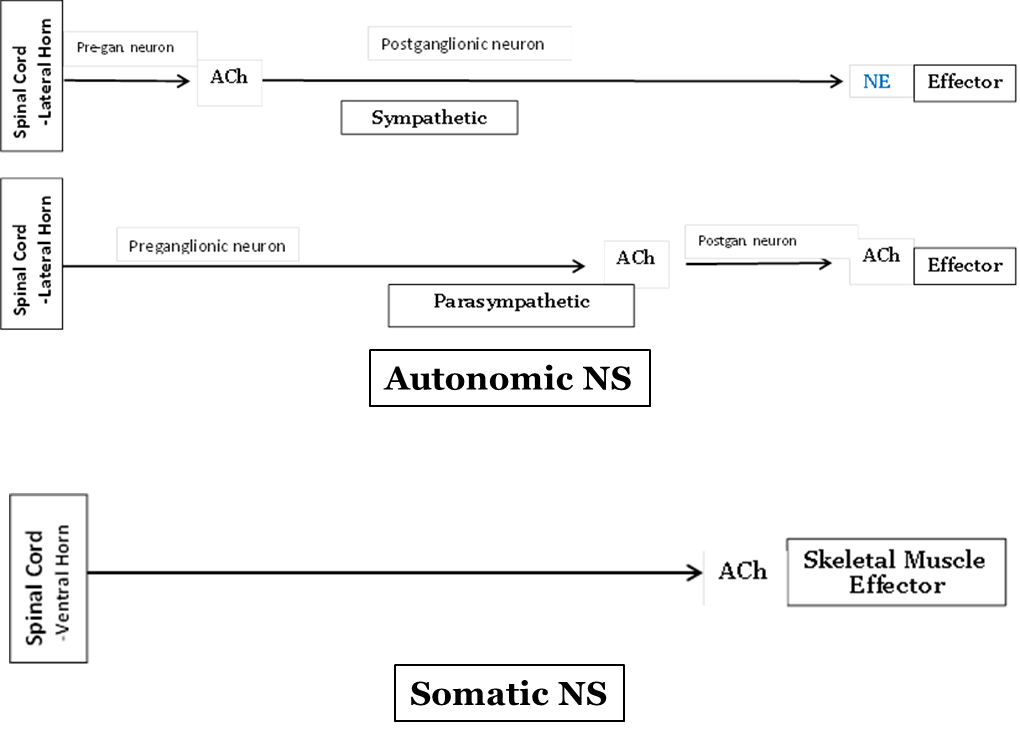The ANS also uses ACh in addition to another neurotransmitter not found in the SNS, norepinephrine, commonly written as NE. The rationale behind using two different neurotransmitters in the motor pathway is that one will excite a particular effector and the other will cause relaxation or decreased activity of the effector. For example, NE increases heart rate in response to the bear that we saw in the woods but ACh will decrease heart rate when it is time to go to sleep. This system does not utilize the same principle as the SNS because unlike skeletal muscle, cardiac muscle is not simply turned on or off but there are different degrees of activity and require a dual neurotransmitter to regulate the degree of activity based on the body's needs.

Figure 2: The two different efferent motor divisions use different neurotransmitters and pathways to send their individual signals to the effectors. The ANS uses either Acetylcholine (ACh) or Norepinephrine (NE), and the SNS uses ACh. The ANS effectors are smooth muscle, cardiac muscle glands and adipose tissue, whereas the SNS effectors are the skeletal muscles.
We have summarized the differences between the SNS and the ANS in the following chart for ease of reference.
| Blank | SNS | ANS |
|---|---|---|
|
Control of Motor Output |
Voluntary |
Involuntary |
|
Effector |
Skeletal Muscle |
Smooth Muscle, Cardiac Muscle, Glands, and Adipose Tissue |
|
Motor Pathway |
One Motor Neuron |
Two Motor Neurons |
|
Neurotransmitter |
Acetylcholine (ACh) |
Acetylcholine (ACh) and Norepinephrine (NE) |

